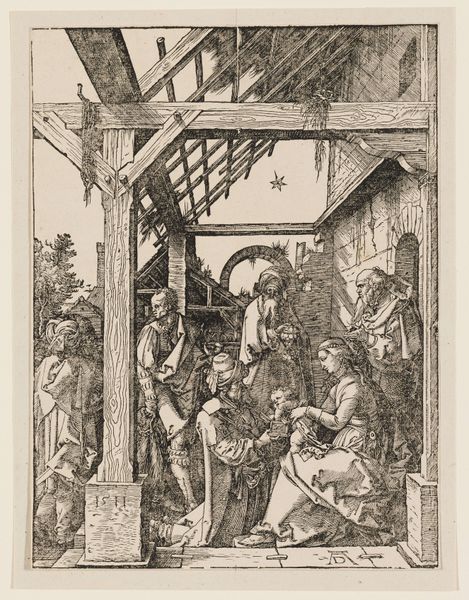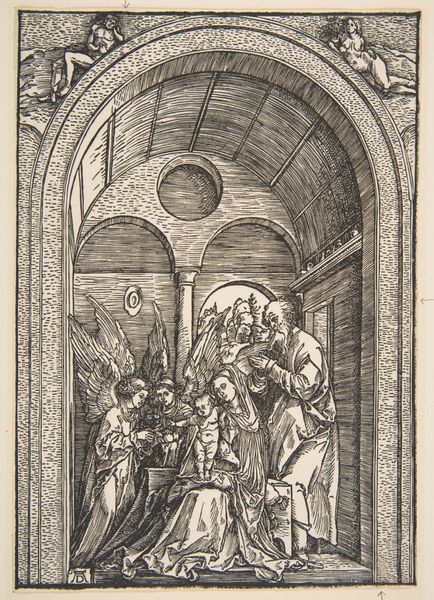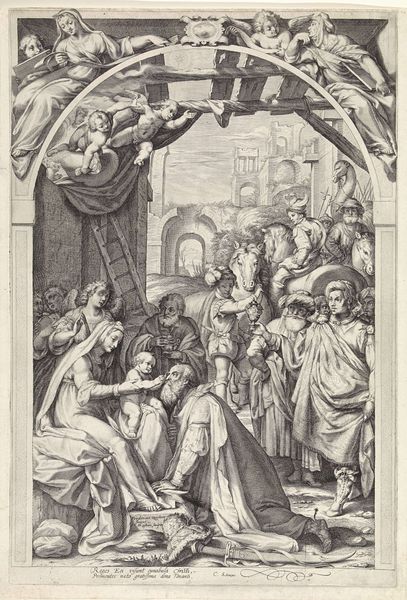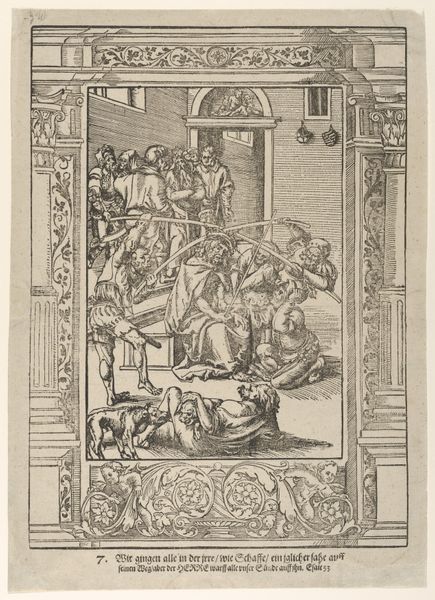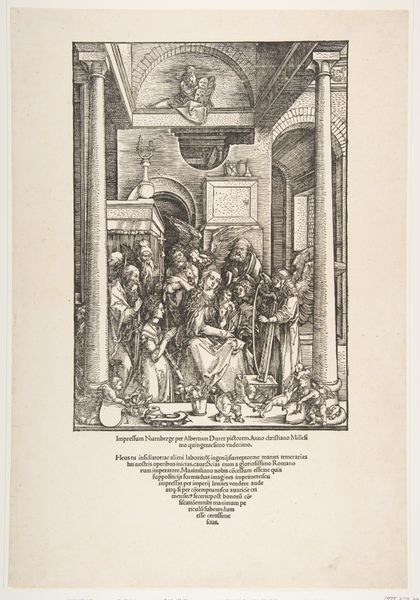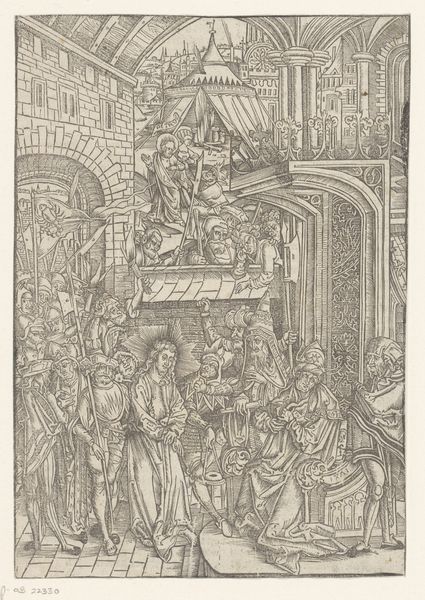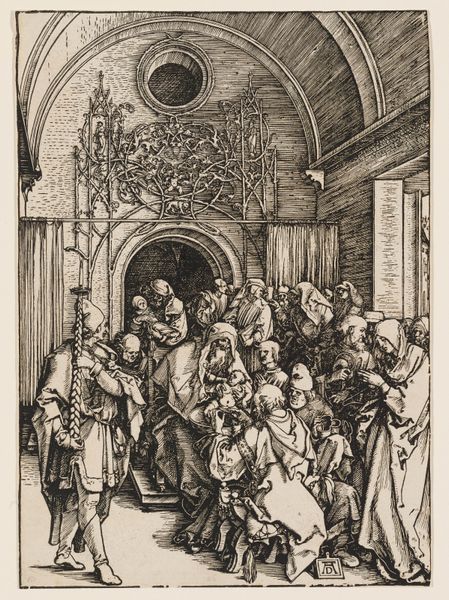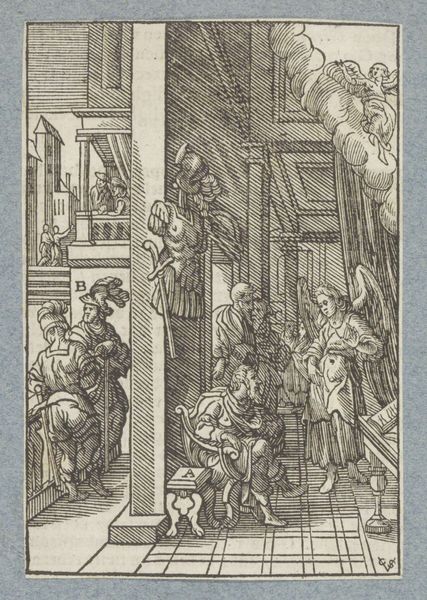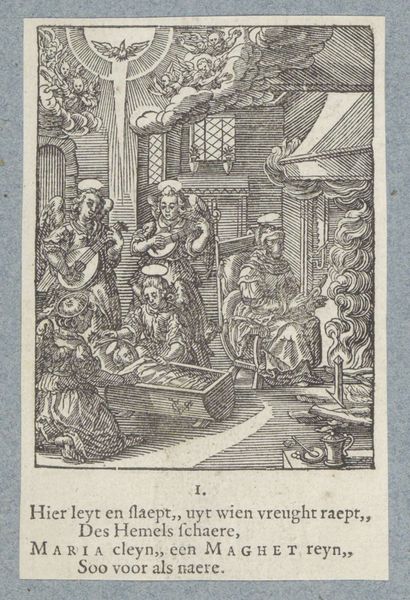
The Glorification of the Virgin, from "The Life of The Virgin" 1502
0:00
0:00
drawing, print, woodcut, engraving
#
drawing
# print
#
figuration
#
11_renaissance
#
woodcut
#
line
#
the-seven-and-five-society
#
history-painting
#
northern-renaissance
#
engraving
#
virgin-mary
Dimensions: sheet: 12 11/16 x 9 5/16 in. (32.2 x 23.6 cm) image: 11 5/8 x 8 5/16 in. (29.6 x 21.1 cm)
Copyright: Public Domain
Editor: Here we have Albrecht Dürer's "The Glorification of the Virgin," a woodcut print from around 1502, part of his "Life of the Virgin" series. I find the intricate lines create such a detailed and almost dreamlike vision. What cultural symbolism strikes you most prominently in this piece? Curator: The overwhelming sensation I receive comes from observing the sacred space which Dürer builds for the narrative. Look at the architectural components and the use of vertical lines which convey a hallowed location, juxtaposed with images such as cherubs surrounding The Virgin, a classic representation, but note the expressions and emotions expressed in each face and body, from child to adult. This invokes contemplation in the viewer on religious beliefs. Editor: That’s a great point. I hadn't really thought about the setting adding to the image’s narrative. I was so focused on the Madonna and Child figures. It seems Dürer is merging the celestial with the tangible world? Curator: Precisely. Consider how the architecture itself – the columns, arches, even the angel up high – acts as a symbolic bridge. What emotions does the image try to project, what memories does it pull up? Look at how the eyes connect between figures and see if it prompts an emotion from yourself. Editor: It's amazing how much information Dürer conveys just through the arrangement and depiction of figures. The expressions hold a great deal of weight. Is this kind of intense figuration typical of Northern Renaissance art? Curator: The Northern Renaissance, particularly through printmaking, frequently emphasized accessible symbolism that would be recognisable at the time by everyday citizens. They may have gained understanding of certain symbolism over years of religious education. The density is definitely part of it. This work can serve as a meditative visual. What new observations might surface each time we engage with the work? Editor: It does feel like something to meditate on! I’ll certainly look at Dürer's work with new eyes, focusing on those symbols and their connections to both the sacred and the everyday. Curator: Agreed! Symbols and their relationship with cultural memory provides more context the deeper you analyze and examine the history.
Comments
No comments
Be the first to comment and join the conversation on the ultimate creative platform.



